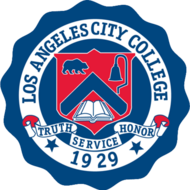
(View Complete Item Description)
1: Chapter 1 Reading Skills
1.1: Use Pre-reading Strategies
1.2: Annotate and Take Notes
1.3: The Reading-Writing Connection
1.4: Critical Reading and Rhetorical Context
1.5: Reading Strategies - Previewing
1.5.1: 3.4 Annotation Basics
1.6: Questioning Strategies
1.7: Inferences
1.8: Vocabulary
1.9: Reading Strategies - Taking Notes
1.10: Main Ideas and Supporting Details
1.11: Paraphrazing and Summarizing
1.12: How to Read Like a Writer
1.13: Key Takeaways
2: Chapter 2 Writing Process
2.1: Apply Prewriting Models
2.1.1: Outlining
2.1.2: Outlining
2.1.3: Drafting
2.2: The Writing Process - How Do I Begin? (Exercises)
2.3: The Reading-Writing Process
2.4: Steps in the Reading-Writing Process
2.5: The College Essay Assignment- Analysis, Rubrics, and Critical Thinking
2.6: Argument
2.7: Purpose, Tone, Audience, Content in an Assignment
2.8: Prewriting Strategies
2.9: Outlining
2.10: Key Takeaways
2.11: Revising and Editing
2.12: Chapter 4 Revising
2.12.1: Revising and Editing
3: Chapter 3 Essay Essentials
3.1: Writing a Thesis
3.2: Working Thesis
3.3: Elements of a thesis
3.4: Where is the thesis?
3.5: Tips for writing a thesis statement
3.6: Resources
4: Chapter 4 Writing Basics
4.1: Moving Beyond the Five-paragraph Theme
4.1.1: The Three-story Thesis- From the Ground Up
4.2: The Three-story Thesis- From the Ground Up
4.3: Three-story Theses and the Organically Structured Argument
4.4: Exercises
4.5: Verb tense
4.6: Passive and active voice
4.7: Run-ons, fragments, comma splices
5: Sentence Clarity
5.1: Chapter 5 Sentence Clarity
5.1.1: Sentence Variety
5.1.2: Coordination and Subordination
5.1.3: Parallelism
5.1.4: Writing Introductions
5.1.5: Writing Conclusions
5.1.6: Writing Summaries
5.1.7: Paraphrasing
5.1.8: Quoting
Material Type:
Textbook
Author:
Wendy Witherspoon



